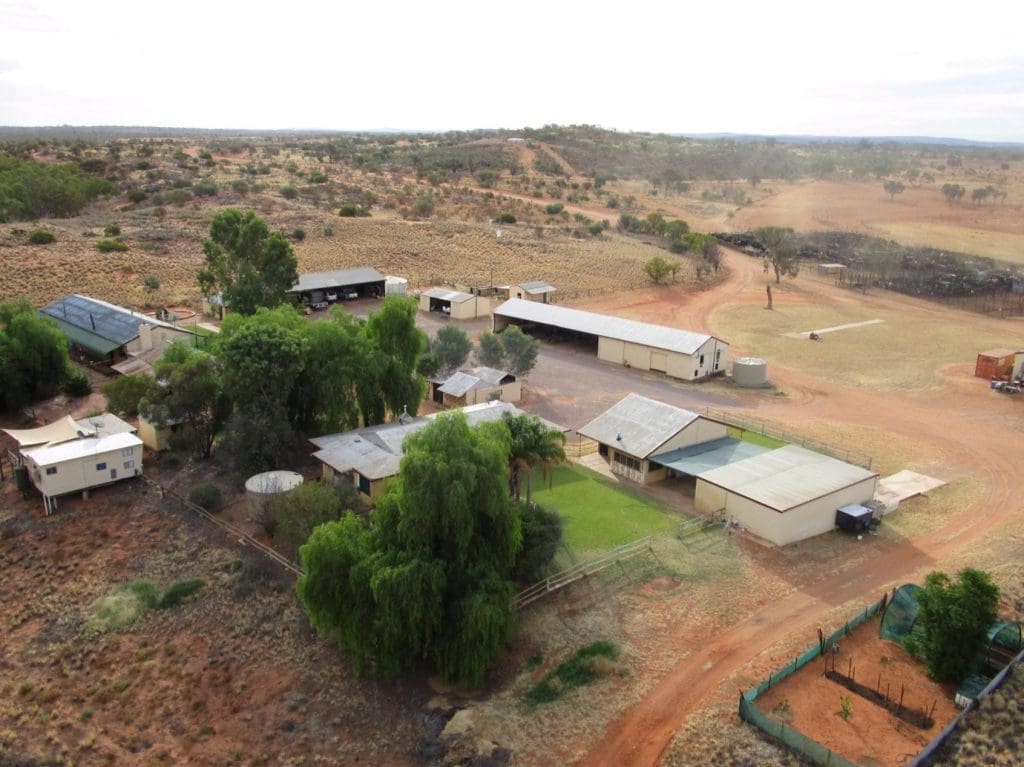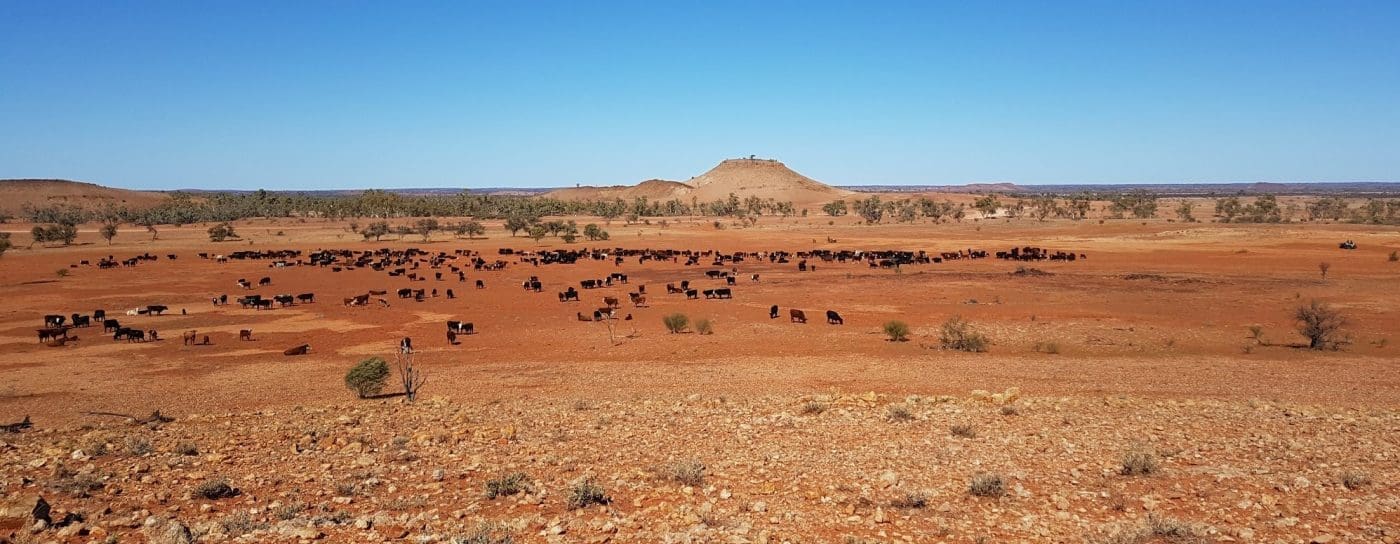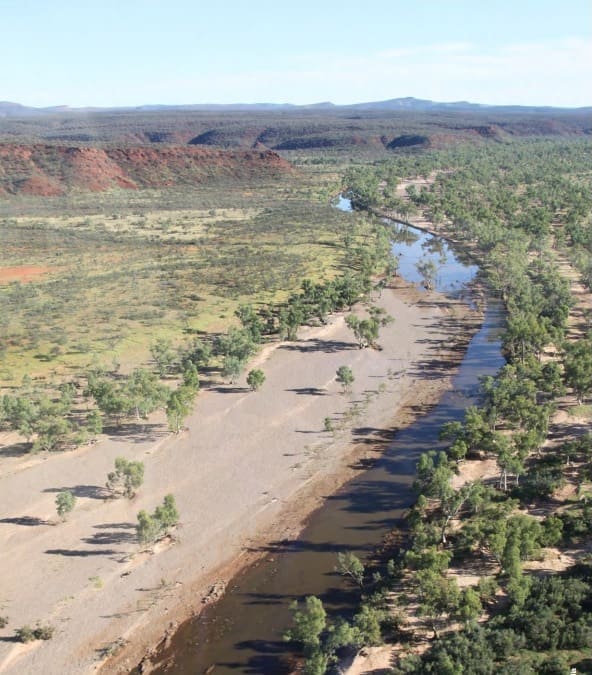PROMINENT Northern Territory cattleman Tim Edmunds has paid $32 million walk-in walk-out, including 3500 head of cattle, for Central Australia’s well regarded Henbury Station.
Located 230km south of Alice Springs, Henbury spans 5218sq km and can run between 13,000 and 15,000 head of cattle.
Readers may remember that Henbury Station made headlines back in 2011 when it was purchased by RM Williams Agricultural Holdings for $13 million – considered way over the odds, based on grazing land values at the time.
The controversial purchase was underpinned by a $9 million Federal Government grant to destock the property of its cattle and create the world’s largest carbon farm.
The project collapsed, and Henbury was sold two years later for less than $8.5 million (see full transaction history details below, or click here to read our original story from our files).
The property extends from the MacDonnell Ranges across the open red plains to the Finke bio-region, incorporating the regionally-significant and oldest wetlands in Central Australia.
The Palmer and Finke Rivers run through Henbury, carving out many gorges containing permanent waterholes.
Latest purchase
The latest purchase of Henbury is timely given that just last month new owner Tim Edmunds sold three adjoining Alice Springs cattle stations to Hewitt Cattle in a deal believed to be worth around $100 million.
He had owned the 259,000ha Narwietooma and the adjoining 308,000ha The Derwent and Glen Helen Stations for just 16 months, after entering into a long-term contract with well-known Central Australian Tony Davis to buy the holdings for a reported $38.5 million.
While it is not known how many cattle were involved in either of the deals, combined the three stations can run more than 40,000 head of cattle.
In 2015, the Davis’ paid $8.75 million for Narwietooma Station and $11.5 million (including 8000 head of cattle) for The Derwent and Glen Helen.
Over their four years of ownership, Tony and Pam focused heavily on improving each property, with significant investments in new yards, fencing, bores, tanks and troughs and solar pumps.
The Narwietooma Aggregation is the second significant sale Mr Edmunds has made to Hewitt Cattle Australia.
In January 2016, his Hale River Pastoral Co assets – the 300,000ha Ambalindum Station, 135km north-east of Alice Springs and the adjoining 202,200ha Numery Station – were sold to the company, backed by one of Canada’s largest pension funds, the Public Sector Pension Investment Board, for $50m including 13,000 head of cattle.
After exiting the Northern Territory pastoral industry, Tim Edmunds returned a year later outlaying $20 million, walk-in, walk-out, for the 5500sq km Napperby Station, 175km north-west of Alice Springs.
He is also believed to have purchased a portion of the adjacent 2170sq km Coniston Station, which sold to neighbour Steven Fogarty of Anninjie for $13 million in July 2017.
Transaction history
In 2011, Henbury Station was purchased by RM Williams Agricultural Holdings for $13 million – considered way over the odds based on grazing land values at the time.
The purchase was underpinned by a $9m Federal Government grant to destock the property of its cattle and create the world’s largest carbon farm.
The Carbon Farming Initiative was designed to allow farmers and land managers to earn carbon credits by storing carbon or reducing greenhouse gas emissions on the land. Credits could then be sold to people and businesses wishing to offset their emissions.
In 2012, Qantas signed a contract to buy a significant proportion of carbon credits from Henbury to offset its own carbon emissions.
However the program collapsed when RMWAH (led by former News Limited chief Ken Cowley), was placed into receivership in June 2013.
Despite limited buyer interest due to uncertainty over its status as a carbon farm and the future of the carbon tax, Henbury was sold as a pastoral lease in July 2014 for $8.47 million to a consortium of established Central Australian pastoral interests – brothers Ashley and Neville Anderson and David Rohan.
At the time of sale, it was reported that a large percentage of the proceeds would be returned to the Department of the Environment under a confidential funding deed agreement with the receivers.
A 1000sq km portion of the holding, about 19pc of its land area, was subsequently set aside under a biodiversity covenant, precluding the running of stock. The protected area (including Running Waters, one of the largest permanent waterholes in Central Australia) is mainly located on the drier, higher and rockier country, meaning it was unlikely to affect the productivity of the cattle business.
One of Central Australia’s best-known cattle and rural property agents Jock McPherson from Territory Rural was not only responsible for the latest off-market transaction of Henbury Station, he also handled the previous sale to the Central Australian consortium.

Henbury Station homestead





Both TOs and white fellas are aware of the significant need to care for this area for multiple regions. Let’s make sure the money to Support TOs goes to the right place, supporting indigenous people and their places into the future ignoring white fella tenements.